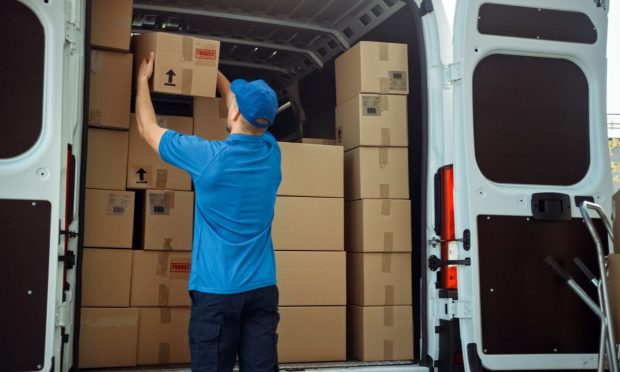D2Cs Eye Commercial Claim Center Delivery to Cut Costs, Thwart Porch Pirates

It may say “free delivery” on your order, but everyone knows the process of moving a package from point A to point B is anything but free, especially for the small retailers who have to shoulder the expense of increasingly costly shipping to compete with the industry’s giants.
Add in a fairly high — and rising — degree of so-called “porch piracy” or parcel theft, and the true cost of your “free” delivery goes even higher.
It’s exactly why Via.Delivery was created and launched in 2020 by founder and CEO Mitchell Nikitin, who told PYMNTS the new service, which combines commercial freight rates and claim center pickups rather than doorstep drop-off, is gaining traction with over 2,000 merchants that have signed up and now offer it as a delivery option at checkout.
“The fact that commercial delivery — which is what we are trying to develop in the U.S. — is generally 20 to 30% less expensive than traditional residential enables D2C brands to absorb these shipping costs in order to still provide a free shipping option,” Nikitin said.
Clearly, the convenience of doorstep delivery is ideal for consumers who live in a safe area and have a secure drop-off location, but that is obviously not the case for everyone, meaning the option of picking up your package(s) yourself from a nearby location — like a Walgreens — is a viable and desirable alternative for many people and businesses.
As much as 70% of package volume in Nikitin’s native Russia and Europe are delivered this way, but the method was under-utilized and overly complex in the U.S. By adding the commercial delivery/claim center pickup option at checkout, and then simplifying the process of selecting which of the 20,000+ U.S. locations is closest, Via.Delivery says its service is equivalent to BOPIS (buy online, pickup in-store) for direct-to-consumer (D2C) merchants that don’t have physical stores.
Not for Everyone, Perfect for Some
Besides the cheaper commercial freight rates and better security, the claim center drops also eliminate “second and third attempt” deliveries for things such as wine that require a signature and ID to complete, a process that Via COO Jeff Macak pointed out was a “pain in the rear” for customer and shipper alike.
But by tapping into existing but under-used commercial delivery networks built by FedEx and UPS over the past five or six years, Via’s platform has simplified their access and usage and essentially democratized a system that was largely off-limits.
“Quite frankly, probably only the biggest of shippers has spent the time and initiative to invest in trying to plug into these particular [commercial] networks,” Macak said, including Bed Bath and Beyond where he previously served as chief supply chain officer.
But now, he said, D2C brands that don’t have the infrastructure, money or technology can easily plug into this system and allow their customers to securely pick up their packages at their convenience within a one-week window.
While this concept is not new and is widely used in Europe, it currently only accounts for “low single-digit” share of delivery in the U.S., a figure Macak thinks could grow to 20 or 30% as consumer and merchant awareness rises.
“It is absolutely cheaper than the residential delivery,” Macak said. “Someone has to pay [because] there’s no such thing as free shipping.”
